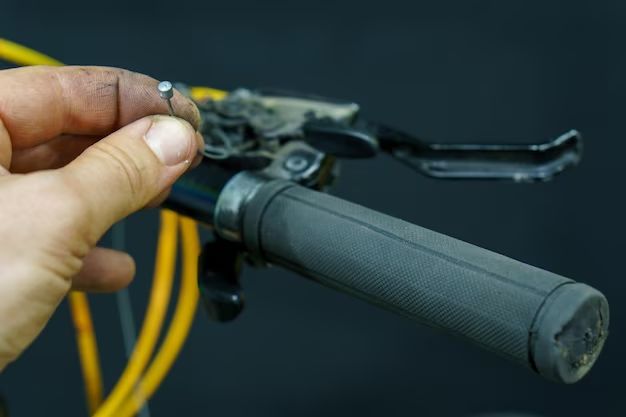A throttle cable is a crucial component that connects the gas pedal to the throttle body and allows you to control the flow of air into the engine. Over time, the cable can become frayed, kinked or detached, causing throttle response issues, lack of power, stalling and other driveability problems. Replacing a faulty throttle cable is the proper long-term fix, but that requires ordering a new cable and having some mechanical skill and tools to install it correctly. If you’re in a bind and need a temporary fix to limp the vehicle along until you can replace the cable, there are a few DIY options to try at little to no cost.
Page Contents
What are the symptoms of a faulty throttle cable?
Here are some common signs that your throttle cable may be damaged or disconnected:
- Gas pedal feels loose, spongy or has excessive play
- Engine RPMs surge up and down at idle
- Loss of engine power, especially under acceleration
- Car stalls or struggles to start
- Pedal needs to be pumped to maintain speed
- Pedal goes to the floor but doesn’t increase engine speed
If you’re experiencing any of those throttle issues, inspecting the cable is the first step in diagnosing the problem.
Inspect the throttle cable
Pop open the hood and locate the throttle cable, which runs from the gas pedal to the throttle body on the engine. Follow the cable along its entire length and look for any damage or detachments:
- Frayed or cracked cable housing
- Broken strands or kinks in the inner wire
- Detached ends at the gas pedal or throttle body
- Missing clips or retainers that are loosening the cable
Any obvious cable damage will require replacement of the entire throttle cable. But if the cable seems intact, you can attempt a temporary fix.
Try adjusting cable slack
Excessive slack or tightness in the throttle cable can cause throttle response issues. Locate the cable adjuster, typically found near the throttle body end of the cable. This will be a threaded ferrule on the cable housing you can twist to take up slack in the inner wire.
Turn the ferrule to tighten or loosen the cable while checking pedal free play inside the vehicle. Adjust until you have about 1/4 inch of play at the pedal when at rest. Be sure not to overtighten, which can bind the cable. Proper adjustment may improve throttle response enough to limp the vehicle to a repair shop.
Lubricate stickiness with spray lubricants
If the throttle pedal is sticking or sluggish in returning to idle position, it may just need some lubrication. A dry throttle cable can bind up and stick. Spray lubricants like WD-40 or silicone spray can help penetrate the cable housing and lubricate the inner wire. Thoroughly spray along the full length of the cable and allow time for the lube to soak in while working the pedal. Test for smooth operation before driving.
Bypass with a new temporary cable
If the throttle cable appears too damaged to rely on, even temporarily, you can rig up a new temporary cable to bypass the original. Here’s how:
- Obtain sufficiently strong and flexible cable, wire, or rope about 3 feet long. Nylon rope, lamp wire, even a metal coat hanger may work in a pinch.
- On the gas pedal end, connect or tie the replacement cable to the arm or lever the original cable attaches to.
- Run the temporary cable through the same brackets and guides along the vehicle frame, keeping it clear of hot or moving components.
- At the engine end, manually operate the throttle plate lever on the throttle body to open and close the throttle as you press and release the gas pedal.
- Once you determine the needed throttle body position for proper idle, secure the temporary cable using vice grips or strong zip ties to hold that position.
This will act as a temporary “fixed” throttle to limp home or to a repair shop. But use caution driving since you won’t have variable throttle control.
Zip tie detached cable ends
If the throttle cable has become completely detached at one or both ends, you may be able to reattach it temporarily with zip ties:
- Clean the cable end fittings and mating components at the pedal and throttle body to ensure they fit together properly.
- Align the cable ends and use strong nylon zip ties to securely fasten the cable back into place.
- Multiple zip ties may be needed to regain proper tension and a tight fit.
This is a short term fix only and the cable will likely detach again soon. But it may work long enough to drive for help. Just take it easy on the gas pedal.
Conclusion
A damaged throttle cable is unsafe to drive with for any extended period of time. But in an emergency, using spray lubricants, manual manipulation, or rigging up a temporary cable can get you back on the road to seek repair. Always proceed with caution when relying on a faulty throttle cable. Accelerator issues can lead to very dangerous driving conditions. Replacing the cable properly should be done as soon as possible.
